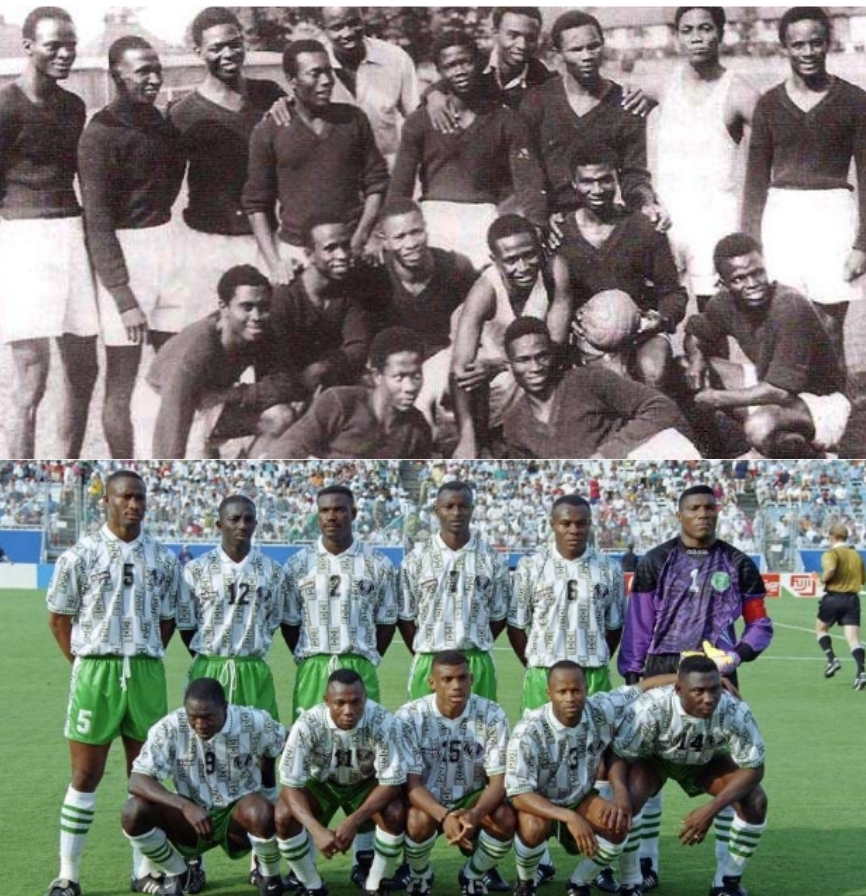Nigerian football’s journey is a captivating tale of evolution, mirroring the nation’s path to independence and global recognition. Buckle up as we take a flight through time, tracing the path from the fiery “Red Devils” to the mighty “Super Eagles”.
Football’s roots in Nigeria stretch back to the 1930s, with unofficial matches between regional teams. In 1949, the official national team, known as the “Red Devils” due to their fiery red jerseys, played its first international game against Marine AFC in England.
The 1950s saw the formation of the Nigerian Football Association (NFA) and the organization of domestic competitions like the Lagos Cup. Players like Teslim Balogun and Christopher Okosieme emerged as early stars, paving the way for future generations.
With Nigeria’s independence in 1960, the Red Devils shed their colonial colors and transformed into the Green Eagles, symbolizing the nation’s new identity. The team joined CAF and FIFA, opening doors to continental and international competitions.
The Green Eagles quickly established themselves as a force in African football. They reached their first Africa Cup of Nations (AFCON) final in 1978 and achieved third-place finishes on several occasions. Players like Christian Chukwu and Muda Lawal became household names, their skills captivating fans across the continent.
In 1986, the Green Eagles qualified for the FIFA World Cup for the first time, marking a historic moment for Nigerian football. Although they didn’t advance from the group stage, the experience boosted the team’s confidence and global standing, proving they could compete with the best.
The late 1980s and early 1990s witnessed the rise of a golden generation of Nigerian footballers. The likes of Rashidi Yekini, Sunday Oliseh, Jay-Jay Okocha, and Daniel Amokachi formed a formidable team that dominated Africa and challenged the world’s elite.
The Super Eagles clinched their first AFCON title in 1980 and repeated the feat in 1994, further solidifying their continental dominance. They reached the AFCON final on several other occasions, cementing their reputation as African football giants.
Nigeria qualified for the FIFA World Cup on six occasions, reaching the Round of 16 three times. The 1994 team, led by Coach Clemens Westerhof, achieved the nation’s highest FIFA ranking (5th) and remains a source of immense pride for Nigerian football fans, a testament to their talent and resilience.
Nigerian football’s journey continues to evolve. While facing challenges on and off the field, the Super Eagles remain a symbol of national unity and a source of inspiration for young Nigerians. The future holds immense promise for this talented team, with the potential to soar even higher on the world stage.

